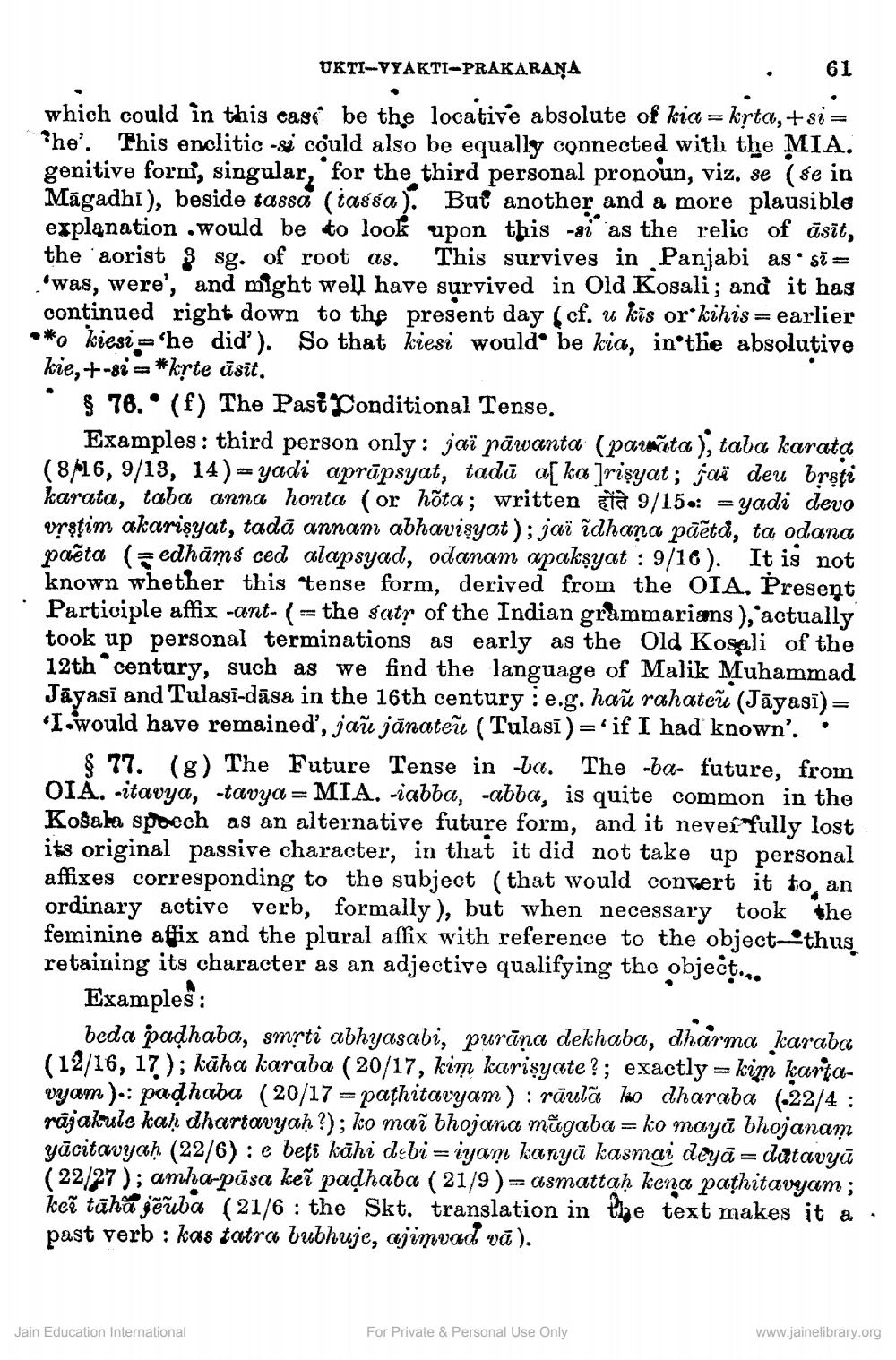________________
UKTI-VYAKTI-PRAKARANA
61
which could in this case be the locative absolute of kia krta,+si = he'. This enclitics could also be equally connected with the MIA. genitive formi, singular, for the third personal pronoun, viz. se (se in Magadhi), beside tassa (tassa). But another and a more plausible explanation would be to look upon this - as the relic of āsīt, the aorist 3 sg. of root as. This survives in Panjabi assi= 'was, were', and might well have survived in Old Kosali; and it has continued right down to the present day (cf. u kis or kihis = earlier *o kiesi'he did'). So that kiesi would be kia, in the absolutive kie,+-8i*krte āsīt.
•
§ 76. (f) The Past Conditional Tense.
Examples: third person only: jai pāwanta (parata), taba karata (8/16, 9/13, 14)-yadi aprāpsyat, tadā a[ka ]risyat; jai deu brsti karata, taba anna honta (or hota; written 9/15: =yadi devo vrstim akarisyat, tada annam abhavisyat); jai idhana paeta, ta odana paeta (edhams ced alapsyad, odanam apakṣyat: 9/16). It is not known whether this tense form, derived from the OIA. Present Participle affix -ant- (= the saty of the Indian grammarians), actually took up personal terminations as early as the Old Kosali of the 12th century, such as we find the language of Malik Muhammad Jayasi and Tulasi-dasa in the 16th century : e.g. hau rahateu (Jāyasi) = 'I would have remained', jau janateu (Tulasi)='if I had known'.
-
§ 77. (g) The Future Tense in -ba. The -ba- future, from OIA. -itavya, -tavya = MIA. -iabba, -abba, is quite common in the Košala speech as an alternative future form, and it never fully lost its original passive character, in that it did not take up personal affixes corresponding to the subject (that would convert it to an ordinary active verb, formally), but when necessary took the feminine affix and the plural affix with reference to the object-thus retaining its character as an adjective qualifying the object...
Examples:
beda paḍhaba, smrti abhyasabi, purana dekhaba, dharma karaba (12/16, 17); kāha karaba (20/17, kim karisyate?; exactly kim kartavyam): paḍhaba (20/17-pathitavyam): raula o dharaba (22/4: rajakule kaḥ dhartavyah ?); ko mai bhojana mugaba = ko maya bhojanam yacitavyaḥ (22/6): e beti kahi debi - iyam kanya kasmai deya = datavyā (22/27); amha-pāsa kei paḍhaba (21/9)= asmattaḥ kena pathitavyam; kei taha jeuba (21/6 the Skt. translation in the text makes it a past verb: kas tatra bubhuje, ajimvad vā).
Jain Education International
For Private & Personal Use Only
"
www.jainelibrary.org




